Institute of Industrial Science
Yoshioka Laboratory
Long-stroke high-speed sub-nanometre positioning table system
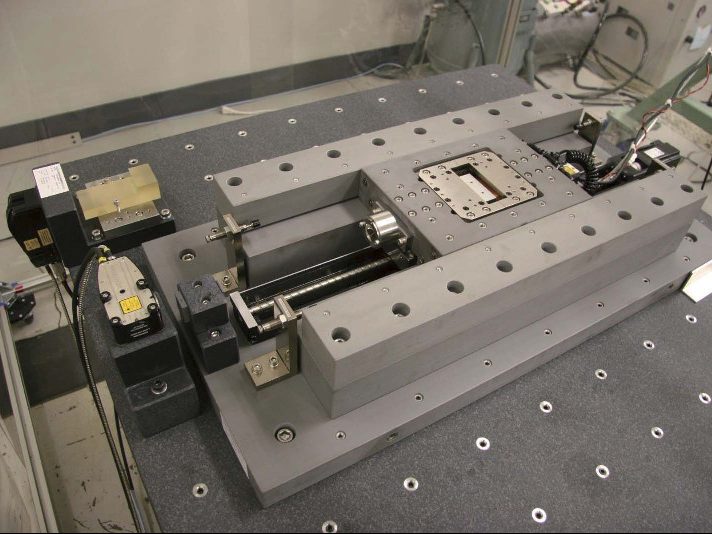
With advances in ultra-precision machining and semiconductor technology, it is desirable to realise ultra-precise high-speed positioning systems with sub-nanometre positioning accuracy over a wide range of motion. In this research, new high-speed, ultra-precision positioning table system with following features were developed.
(1) Completely non-contact structure with air bearings and linear motor drive
(2) Displacement measurement with laser interferometry that achieves a measurement resolution of approximately 0.01 nanometres through the development of optical paths and signal processing
(3) Gravity drive
(4) Displacement measurement satisfying Abbe's principle
The elimination of these possible error sources enables the developed system to achieve a high positioning resolution of 0.3 nanometres over a wide motion range of 150 mm.
Planar nanopositioning table system
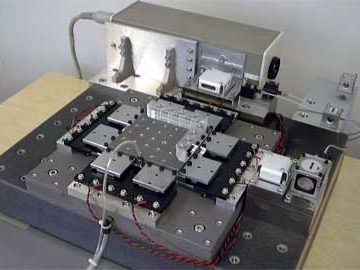
To achieve positioning accuracy on the order of nanometres simultaneously in multi-degree-of-freedom motion, a positioning table system with a new structural concept, different from conventional table structures, is required, which thoroughly eliminates error factors in the system.
This research aims to realise an XY-table system capable of ideal planar motion, and is developing a planar motion table with a completely non-contact structure and evaluating its positioning characteristics. Furthermore, micro-cutting operations are carried out using the developed table system, and the table motion characteristics during machining and the machined surface are also evaluated.
High-torque, high-precision oscillating rotary actuator
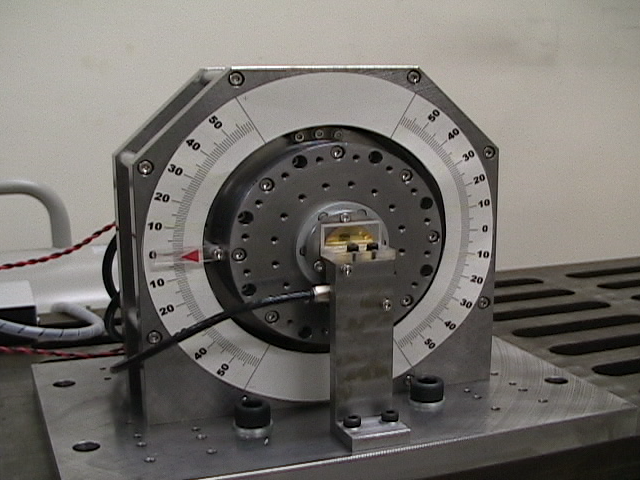
For ultra-precise machining of parts with complex three-dimensional geometry, a stage is required that allows high-precision tilting of the workpiece or tool in the vertical plane.
The drive elements of such stages require high torque and high precision at the same time in order to drive eccentric loads stably and precisely. In this research, a new drive element based on a new concept combining a pneumatic actuator and an electromagnetic actuator is proposed, and further high-precision drive is investigated.
Adaptive control with microsensors
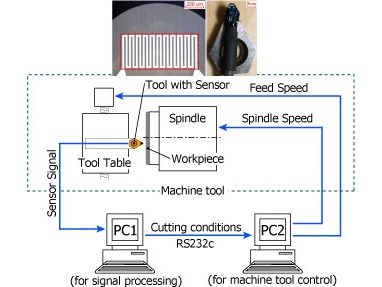
In order to automate ultra-precision cutting, it is necessary to control the machine so that it is always in the appropriate machining state while recognising conditions during machining. In this research, temperature-condition-constrained adaptive control, which keeps the temperature almost constant during machining, was achieved by controlling the machine movement (cutting speed) so that the temperature at the machining point remains constant, based on temperature information measured using a micro temperature sensor fabricated using MEMS technology.
Traditionally, information on thermal behaviour was thought to have low sensitivity and to take a long time to transmit. However, the ultra-precision cutting process allows the sensor to be positioned extremely close to the cutting edge on the diamond tool, and it has been confirmed that the information is sensitive and responsive enough to be applied to the construction of control systems.
Wide-area nanopattern generator
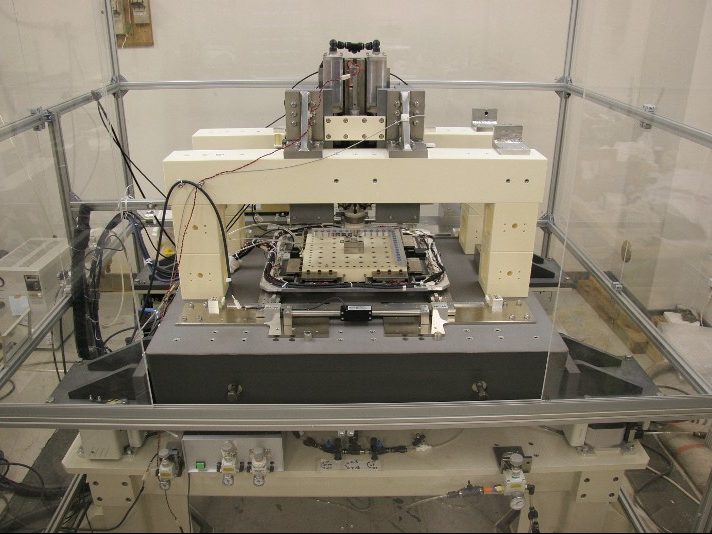
In recent years, there has been a growing demand for ultra-precision machines with higher precision and a wider machining range, with machining accuracies on the order of nanometres being desired.
In this research, a mother machine based on a new structural concept is being developed to realise machining with machining accuracy on the order of nanometres in a machining space on the order of 100 mm.
(1) Completely non-contact structure with air bearings, linear motor drive, etc.
(2) Application of ceramic materials in major structures.
(3) Supporting structures with active damping systems.
The elimination of possible thermal and mechanical error sources enables machining with a resolution of 1 nanometre over a wide range of motion. In machining experiments using the developed system, nanometre-scale micro-patterns have been created by ultra-precision cutting.
Compact 3D nano shape measurement system
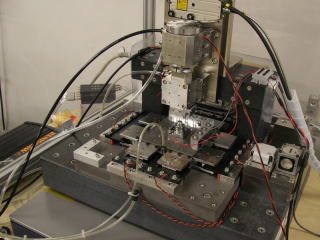
To realise high-precision optical elements such as aspherical glass lenses, shape accuracy and surface roughness on the order of nanometres are required, and the development of a three-dimensional nanometry measuring system capable of measuring arbitrary shapes of several 10 mm with nanometre-order accuracy is needed.
In this research, a new shape measurement system that simultaneously achieves a measurement range of several tens of millimetres and a measurement resolution on the order of nanometres is being researched and developed by applying a high-resolution probing system based on the SPM measurement principle and a high-precision wide-range scanning mechanism that eliminates as many sources of motion error as possible.
Measurement evaluation experiments using the developed shape measurement system have shown that it is capable of measuring spherical surfaces with inclined surfaces on the millimetre scale and has high repeatability on the order of nanometres.